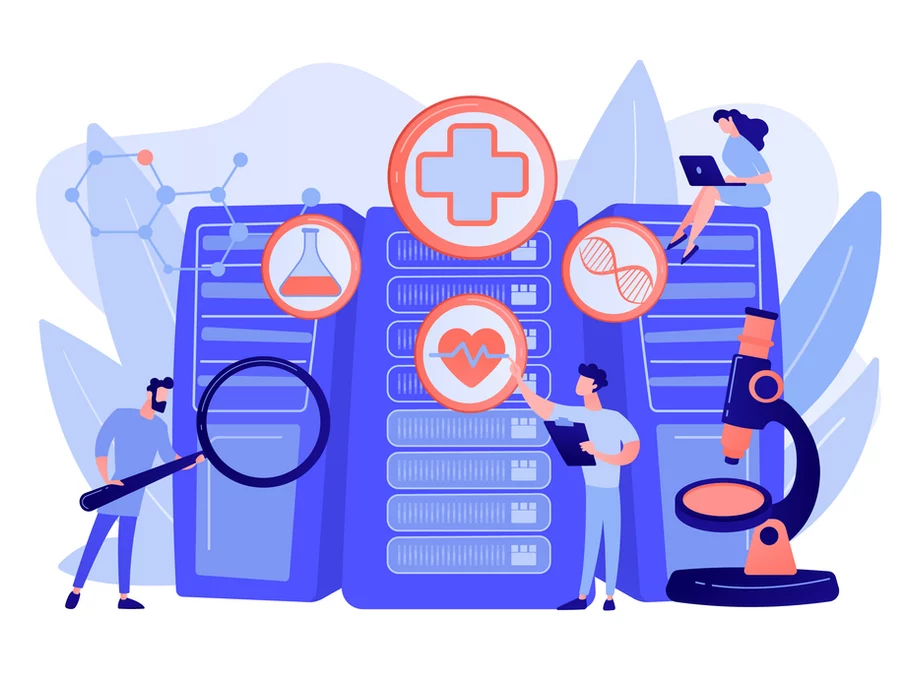Experts have long predicted the demise of the spreadsheet; information silos, slow turnaround, and incomplete reporting replaced by AI and big data. However, the spreadsheet is not going quietly into the night.
A recent study of over 1,000 executives showed that 62% of companies still rely heavily on spreadsheets. 67% of those executives are uncomfortable accessing and using data from available technology.[1] While advanced analytic resources are available, the majority of executives are not using analytical tools or encouraging application in their organization.
In the pharmacy space, industry leaders are embracing data analytics to distance themselves from the competition and provide top-level benefits to their clients and members. By utilizing a comprehensive data visualization tool, brokers, plan sponsors and key stakeholders make more informed plan decisions based on the actionable insights inherent to pharmacy analytics.
Improved financial and clinical outcomes
Cost containment is a driving force behind many decisions stakeholders make when designing formularies, outlining network coverage, and establishing third-party partnerships. To be most effective, these financial decisions should be made with complete visibility into plan spend. Unfortunately, many stakeholders do not know where their pharmacy dollars are going nor do they have an efficient way to find out.
Garret D’Antoni, CFO at Prescription Care Management explains, “Comprehensive analytics can provide actionable steps to manage costs. For example, an eligibility review can help identify, and quickly eliminate, duplicate member entries and other common errors.”
In addition to weighing decisions based on financial outcomes, stakeholders must consider clinical outcomes. Often participant health is indicative of plan health. With pharmacy analytics, clinical outcomes improve as plan sponsors monitor prescription costs, trends, and fees that influence participant out-of-pocket expense.
“Data analysis has been used for years to review data collected and shared between healthcare providers to see what medications are being dispensed and if the patient is receiving the correct dose for the correct diagnosis,” explains Dr. David Merritt, PharmD, RPh. “Now, we use this data to help manage current healthcare expenditures and look at future trends to more accurately create budgets, which in turn will avoid unexpected deficits. Showing which medications are trending higher in cost, potential alternatives, and higher-priced pharmacies are just some of the clinical benefits of analytics.”
A more holistic plan view
The promise of big data does not lie in gathering more data but in accurately interpreting existing data. By aggregating data across vendors, pharmacy analytics helps stakeholders more accurately highlight plan efficiencies and identify issues.
Pooling data from multiple sources into one tool that examines and interprets that data results in more consistent reporting. Instead of manually compiling reports with different metrics and formats, stakeholders can utilize pharmacy analytics to view of all their data in one succinct, actionable report.
“Pharmacy analytics breaks down organizational information silos,” D’Antoni says, “By seeing all the data in one place, brokers can provide clients a holistic view of plan spend, pain points, and action items.”
When it comes to managing multiple plans, pharmacy analytics provides a simplified approach to comparing and understanding plans, clients, and point programs across the book of business.
From descriptive data to predictive insights
Spreadsheets display descriptive information. Pharmacy data analytics extends this basic summary information by providing predictive insights. These insights emphasize savings opportunities and clinical solutions that, when implemented, bolster cost containment and health initiatives.
Predictive insights allow stakeholders to utilize detail buried deep in pharmacy claims files to develop a budget robust enough to support a high-level plan. Plan elements like NDCs, DAW codes, PBM rebates, and guarantees can be closely examined to cultivate savings.
A claims file may contain hundreds of thousands of lines. Pharmacy analytics can help the stakeholders focus on the minutia to predict monthly spend or act on that data to cut monthly spend.
Become the plan expert
Pharmacy analytics takes your data out of the warehouse and puts it to work for you. Rather than relying on the PBM or insurer to provide the next steps, you can track plan spend, utilization, guarantees, and other metrics to optimize pharmacy resources.
“With the rising cost of healthcare in the United States, employers and brokers need all of the tools available to help control medical expenditures.” Dr. Merritt says, “Through analytics, employers will have a tool to continually regulate and monitor pharmacy trends, thus continuing to offer the best possible healthcare at affordable prices to their employees.”
The spreadsheet can no longer solve the problems of multi-faceted pharmacy plans. Old methods no longer cut it in today’s evolving, and expensive, pharmacy market. Pharmacy analytics is actionable intelligence.
Take control of your pharmacy plan. Start leading the pack with a holistic plan view that results in improved financial and clinical outcomes and a more robust pharmacy budget based on predictive insights. Utilize pharmacy analytics and lay that spreadsheet to rest.

